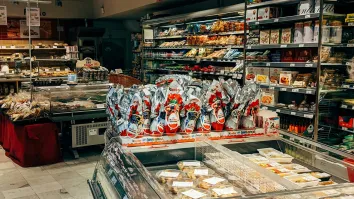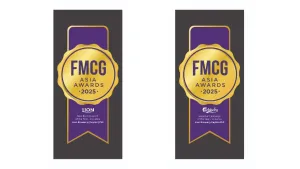
How can Indian e-tailers sustain growth in a cooling market?
Annual e-retail growth was halved to 10–12% last year.
Indian e-tailers need a new game plan as they face mounting losses from increased competition particularly from global players, and as market expansion slows and consumer spending tightens.
Their sales hit $60b last year, with more than 270 million Indians shopping online—making India the second-biggest e-tail market globally in terms of online shoppers.
But growth has slowed to 10–12% annually from more than 20% in previous years, largely due to rising prices and stagnant real wages, according to a March 2025 report by Bain & Company.
Consumption growth has also slowed to 8% post-COVID, down from 11% from 2017 to 2019.
Still, long-term prospects remain strong. India’s e-retail market is expected to reach $170b to $190b by 2030, driven by rising disposable income as gross domestic product per capita crosses the $3,500 to $4,000 threshold—a key global tipping point for e-retail acceleration, it said.
To keep the momentum, retailers are turning to quick, trend-first, and hyper-value commerce.
Quick commerce—delivery in under 30 minutes—now accounts for two-thirds of all e-grocery orders and 10% of overall electronic retail spending.
Indian players have made money in this segment by targeting dense urban populations and using low-rent dark stores and optimised supply chains.
With category expansion into general merchandise, electronics, and apparel, q-commerce is projected to grow more than 40% annually through 2030, Bain said.
However, sustaining margins will require adapting delivery models outside top metros, faster processing and delivery, and more product choices.
Trend-first commerce, which is popular in fashion, is also growing fast, fuelled by Gen Z, influencer-led marketing, and fast inventory cycles.
Local players like Zudio and Snitch are copying global models by launching fresh, low-priced styles daily. This segment is expected to quadruple to $8b to $10b by 2028, with more than half of the revenue coming from online channels, according to the Bain report.
Meanwhile, the share of hyper-value commerce—led globally by platforms like Temu—in India’s electronic retail gross merchandise value rose to as much as 15% last year from 5% in 2021 by focusing on ultra-low-price products, it said.
India’s consumer landscape is complex and varied. Gen Z now makes up 40% of e-tail shoppers and spends significantly more than older cohorts on lifestyle, electronics, and beauty. These users shop fast, prefer unified payments and are highly influenced by social media.
Regional behavior also differs. For instance, shoppers in North India tend to prioritise brand visibility and trends, whilst those in South India associate top brands with quality.
Moreover, consumers in Tier-2+ cities are spending at metro levels on some products, and shoppers in mature markets like Coimbatore and Vadodara spend 40% more than those in newer markets like Prayagraj and Warangal. In these cities, shoppers tend to favour premium and insurgent brands, with average selling prices up 10–25% across categories, Bain said.
To tap into India’s diverse consumer base, brands must localise their products, invest in digital ads, and optimise deliveries. The next phase of growth will depend on how well e-tailers can balance scale with personalisation in a market made up of “many Indias.”
Questions to ponder:
- How can Indian e-tailers balance profit with speed and scale as they expand quick commerce into smaller cities?
- How can they scale and offer personalised products to India’s complex mosaic of different communities, languages, and traditions?



















 Advertise
Advertise





